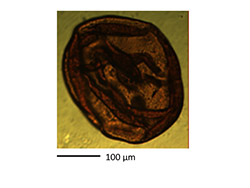
Picture of neurons. Source: https://commons.wikimedia.org/wiki/File:GFPneuron.png#/media/File:GFPneuron.png
The idea of a human-animal hybrid has long been a part of science fiction, but so far has been a highly impossible task. However, recent studies have resulted in the first steps taken towards doing this in reality, involving implanting a miniature human brain into a lab rat.
This miniature human brain is called an organoid, which previously were created in petri dishes made from human stem cells, and grew new neurons similar to how full-size human brains do. Prior testing on these organoids were focused on researching how brain diseases such as Alzheimer’s and Zika virus develop, however this research was limited as the organoids were not attached to any biological system.
This is where researchers, such as Dr. Isaac Chen, came up with the idea of implanting the organoids into rats. Chen’s team had attached the visual cortex portion of the organoid to rats, which was shown to have connected properly as neurons in the organoid were fired when light was shined into the rat’s eyes. A separate lab also successfully connected blood vessels of rats to the organoids, allowing blood flow and growth.

Picture of a lab rat. Source: https://commons.wikimedia.org/wiki/File:Albino_Rat.jpg#/media/File:Albino_Rat.jpg
However, there was a big problem that caused this research to come to a halt: ethics. Organoids are no where near the size of an operating human brain, nor have they shown the growth required to reach human intelligence. Even when attached to a rat, there are no signs of increased intelligence or growing consciousness. What this does imply, however, is that there is a potential for a rat to grow thoughts like a human with advancements in this process. Where can science draw the line between ethical testing on rats and testing on rats that can think like humans?
Currently, the closest thing to an ethical rule is the moratorium against implanting human stem cells into early embryos of vertebrates, but the organoids are not direct stem cells, and the test rats were fully developed. Perhaps laws need to be set to restrict organoid size before implant, or a certain development limit for the rats, as younger rats are likely to develop with the human neurons intertwined? The ethics behind these experiments are hazy, but the results of these experiments are highly beneficial for society, as it provides potential solutions for horrific neurological diseases.
While limits should definitely be set on this kind of experimentation, scientific progress should not be limited. We must continue to strive towards supporting our society and those who are diseased, and as long as the ethical boundaries of this experimentation is understood well, it deserves to be investigated.




